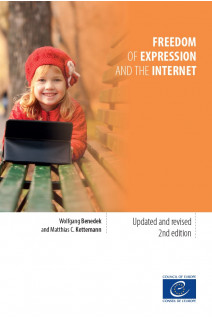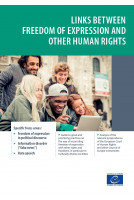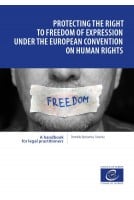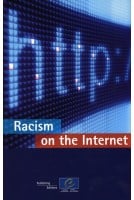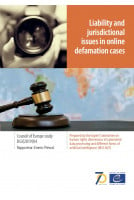LIST OF ABBREVIATIONS TABLE OF CASES PREFACE CHAPTER 1. INTRODUCTION: THE CHALLENGES OF ENSURING FREEDOM OF EXPRESSION ON THE INTERNET CHAPTER 2. THE CONTENT OF FREEDOM OF EXPRESSION ONLINE 2.1. Main elements of the right
2.1.1. Freedom of opinion
2.1.2. Freedom of information
2.1.3. Freedom of the press and media
2.1.4. Freedom of international communication
2.1.5. Freedom of artistic expression
2.1.6. Freedom of cultural expression
2.1.7. Freedom of science
2.1.8. A new freedom? Internet freedom and openness
2.1.9. Right to anonymity
2.1.10. Right to whistle-blowing
2.2. Corollary rights: freedom of assembly and association, and the rights to education and access to knowledge 2.3. Right to access to the internet CHAPTER 3. RESTRICTIONS ON FREEDOM OF EXPRESSION ONLINE 3.1. Principles and problems 3.2. Criteria for restrictions and the practice of the Court in internet cases
3.2.1. Criteria for restrictions
3.2.2. The practice of the Court
The margin of appreciation
The role of context
Protection of the rights of others
Information already available on the internet
Specific responsibilities of the media
Responsibilities of politicians
3.3. Conclusion CHAPTER 4. STANDARD SETTING BY THE COUNCIL OF EUROPE AND NON-STATE ACTORS 4.1. The context: the role of human rights in internet governance 4.2. Activities of the Council of Europe: awareness-raising and standard setting
4.2.1. Recommendations and declarations
4.2.2. Guidelines and recommendations for business
4.3. Activities of non-state actors 84
4.3.1. The Charter of Human Rights and Principles for the internet
4.3.2. Standard setting in the private sector
4.3.3. Transparency to protect freedom of expression
CHAPTER 5. SPECIFIC ISSUES 5.1. Internet content regulation and freedom of expression 5.2. Information and disinformation
5.2.1. The consequences of misinformation
5.3. Technological neutrality and freedom of expression 5.4. Network neutrality and freedom of expression 5.5. Characteristics of protected and unprotected speech online 5.6. Fighting online hate speech 5.7. Defamation, reputation and freedom of expression online 5.8. Protection of children in light of freedom of expression 5.9. Freedom of expression and internet domain names 5.10. The role of internet intermediaries: reconfiguring their rights and duties 5.11. Regulatory approaches to freedom of expression in social networks 5.12. Private and public spaces on the internet 5.13. Freedom of expression and algorithms
5.13.1. Training data
5.13.2. Overblocking
5.13.3. Lack of explainability
5.14. Whistle-blowing as a human right 5.15. Transcending the national level CHAPTER 6. RELEVANT PRACTICE ON THE NATIONAL LEVEL 6.1. Jurisdiction and freedom of expression online
6.1.1. France v. US and Yahoo v. LICRA: a tale of two countries and two courts
6.1.2. UK: the internet comes under national jurisdiction
6.1.3. European Union: the right to be forgotten and its limits
6.1.4. Austria: worldwide obligation to search for unlawful content?
6.2. Access and freedom of expression online
6.2.1. Europe: restrictions placed on prisoners’ access to certain sites
6.2.2. China and Turkey: blocking access to Wikipedia
6.2.3. India: shutdown of internet access and cell phone services in Kashmir
6.2.4. Internet access as a protected right in 20 Council of Europe member states
Germany: the internet as an essential part of life
Finland: a right to broadband?
6.2.5. Cloudflare terminates service for 8chan in response to US shootings
6.3. Copyright and freedom of expression online
6.3.1. France: the limits to enforcing copyright
6.3.2. European Parliament: EU Copyright Directive
6.3.3. Italy: Court holds video-sharing platform liable for content uploaded by users
6.4. Public and private violations of freedom of expression online
6.4.1. Hate speech disrupts freedom of expression online
6.4.2. Germany’s Network Enforcement Act
6.4.3. Singapore: bill to fight misinformation
6.4.4. Russia: criminalisation of online content that ‘disrespects’ the government
6.5. Powerful internet companies and national laws: who wins the battle for freedom of expression?
6.5.1. Google Italy: personalising (criminal) liability for online content
6.5.2. UK: publisher’s liability for Google confirmed
6.5.3. Social media platforms remove Chinese state-sponsored disinformation campaign targeting Hong Kong
6.6. Business and freedom of expression online
6.6.1. Tajikistan: no complicity of companies in censorship
6.6.2. EU: does the export of censorship and surveillance technology violate human rights?
CHAPTER 7. EUROPEAN MONITORING MECHANISMS 7.1. Council of Europe Internet Governance Strategy 7.2. Monitoring by Council of Europe bodies
7.2.1. The Committee of Ministers
7.2.2. The Parliamentary Assembly
7.2.3. The Secretary General
7.2.4. The Commissioner for Human Rights
7.2.5. The European Court of Human Rights
7.2.6. The Council of Europe’s other monitoring bodies
The European Committee on Social Rights
The Advisory Committee for the Protection of National Minorities
The European Commission against Racism and Intolerance (ECRI)
7.2.7. Capacity-building
7.3. Monitoring by the OSCE and the EU
7.3.1. The OSCE
7.3.2. The EU
7.4. European hotlines 7.5. Civil society watchdogs CHAPTER 8. PROMOTION OF FREEDOM OF EXPRESSION ONLINE 8.1. The Council of Europe
8.2. The European Union
8.3. The Organization for Security and Co-operation in Europe (OSCE)
8.4. The United Nations Educational, Scientific and Cultural Organization (UNESCO)
8.5. The UN Special Rapporteur on Freedom of Opinion and Expression
8.6. Initiatives by individual states
CHAPTER 9. CONCLUSIONS 9.1. Freedom of expression as the key right of the internet age
9.2. Setting standards for free speech online: the impact of the Council of Europe
9.3. Protecting internet-based freedom of expression: new challenges
9.4. The role of national courts and of the European Court of Human Rights
9.5. Judges outside the courtroom: monitoring freedom of expression
9.6. Taking things one step further: promoting freedom of expression
9.7. Freedom of expression on the internet: a catalyst and an enabler of human rights
SUMMARY BIBLIOGRAPHY ABOUT THE AUTHORS
